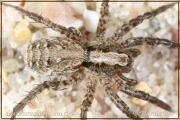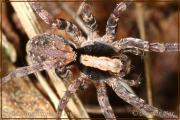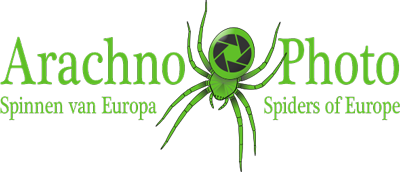As well as the Pisauridae the Lycosidae are free hunting spiders with good eyesight. Sometimes they may be found running on the ground in large numbers. It used to be the misconception that they hunted prey collectively, just like wolves. Hence the English common name Wolf spiders. They mainly feed on small insects, but sometimes larger animals such as beetles are on the menu as well. The females carry the egg sacs on their spinnerets. After the spiderlings hatch, they carry them for about a week on their abdomen. Approximately 240 species occur in Europe.
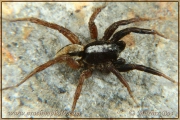
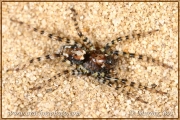
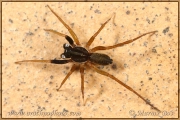
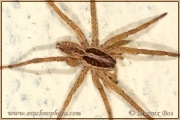
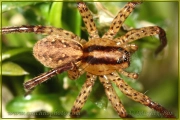
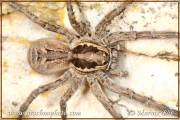
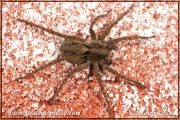
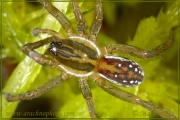
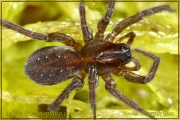
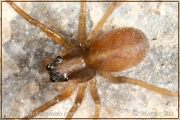
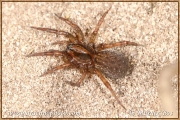
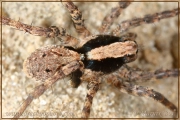
Genus Alopecosa
These spiders have a bright band, accented with white hairs, in the middle of the carapace. The sturdy legs are sometimes very dark or thickened in males. The females stay with their egg sacs in a silk-coated hole in the ground. Occasionally she keeps the egg sac in the sun at the entrance.
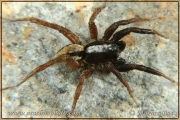
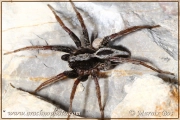
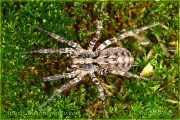
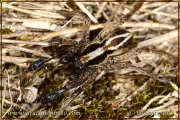
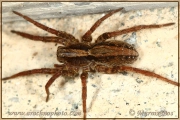
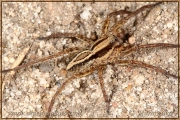
Genus Arctosa
These spiders are very well camouflaged and blend into their surroundings, due to their spotty pattern and often annulated legs. They build their retreats in the sand, under stones or between moss. The males do not have thickened or darkened legs, in contrast to Alopecosa.
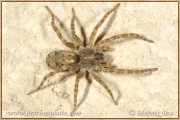
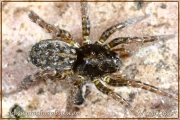
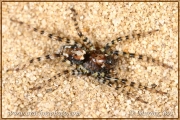
Genus Aulonia
These relatively small spiders are the only wolf spiders that build a web. This small web is located at the opening of the tubular retreat, which the spider builds on the ground. Only two species of this genus occur in Europe.
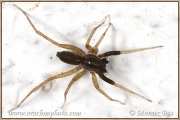
Genus Hogna
The spiders of this genus were previously assigned to the genus Lycosa. They are therefore closely related to the well-known real Tarantula (Lycosa tarantula). Hogna is with its 25 mm slightly smaller. These nocturnal hunting spiders build an underground retreat, for instance under stones or wood. The fertilized females hibernate and make their egg sacs in May / June of the following year.
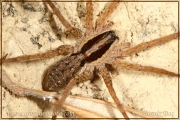
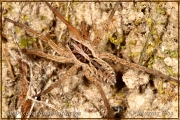
Genus Hygrolycosa
The spiders of Hygrolycosa have a striking appearance, so they are not easily mistaken for other Wolf spiders. Only two species occur in Europe.
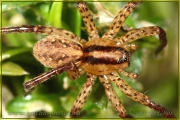
Genus Lycosa
This genus contains the largest spiders of the Lycosidae family (up to about 35 mm.). They are found in Southern and Eastern Europe. The best known Lycosa is Lycosa tarantula, or the European tarantula. The name is derived from the Italian town, in the area where the spider is most common, namely Taranto. Immigrants from Southern Europe believed the bird spiders from e.g. America were the same as back home, so, wrong as it may be, since that period they are called tarantulas as well. Previously, the so-called tarantism was attributed to the bite of this spider, but a real cause of the “disease” is unknown. The tarantula is relatively harmless to people.
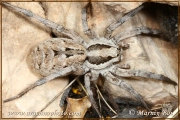
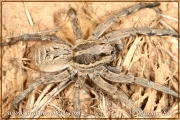
Genus Pardosa
The spiders of this genus are the most common Wolf Spiders. These heat-loving animals mainly occur in open sunny places, where one can find them running around or sunbathing. During bad weather they hide under leaves or moss. They are slightly smaller (4-8 mm) than most other Wolf Spiders, and often have a light band in the middle of the carapace. The species of this genus are quite difficult to distinguish from each other, sometimes this is only possible on genital characteristics. In early summer the females make one to three egg sacs, which are coloured blue, green or brown.
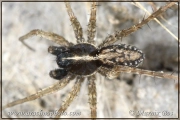
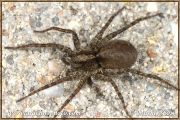
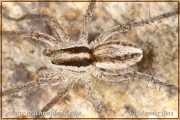
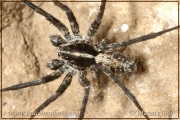
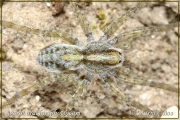
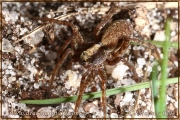
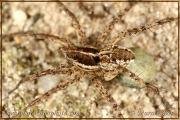
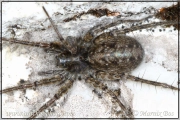
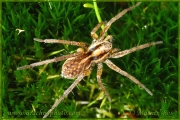
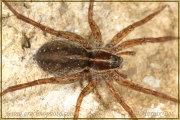
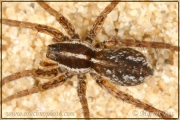
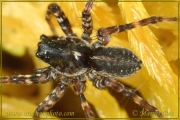
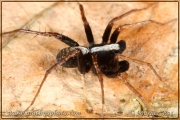
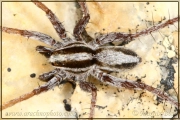
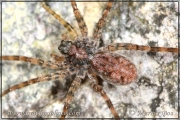
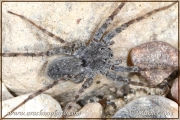
Genus Pirata and Piratula
Pirata and Piratula are small to medium-sized spider and strongly bounded to water surfaces. They can be found mainly near banks and on plants, such as moss, on the water surface. Due to fine hairs on the legs they are able to walk on the surface of the water where they catch insects on and just below the surface. They also occur in very wet meadows and marshy areas. They make a silken retreat from the top of water plants down to the water surface. The spiders have a distinctive pattern on the carapace that somewhat resembles a tuning fork. However, this pattern is difficult to distinguish on very dark specimens.
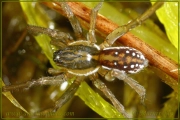
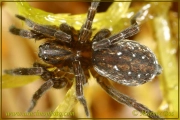
Genus Trabea
The spiders of the genus Trabea are small to medium-sized and quite uniformly coloured. The carapace has a characteristic black pattern. The posterior eyes are strikingly large.
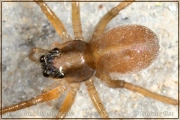
Genus Trochosa
These are medium to large spiders which mostly hunt at night. During the day they can be found in low vegetation. They have a light band on the carapace which widens slightly at the front and with dark spots at the side, making it seem as if there are two loops surrounding the band in the middle. The females dig small holes in the ground for their egg sacs. These they will guard until the spiderlings hatch.
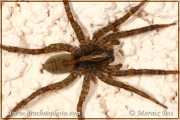
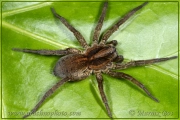
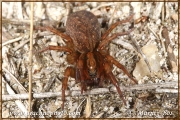
Genus Xerolycosa
The spiders of the genus Xerolycosa are medium sized and slender built. They remind a bit of Pardosa lugubris, but the head is slightly different in shape and also the pattern is different. Xerolycosa loves sunny, very dry areas. They build their retreat of soil material, such as needles of trees, and stay there during the night or guard their egg sac. The spiders hunt during the day.
